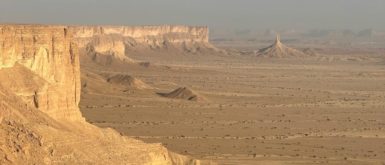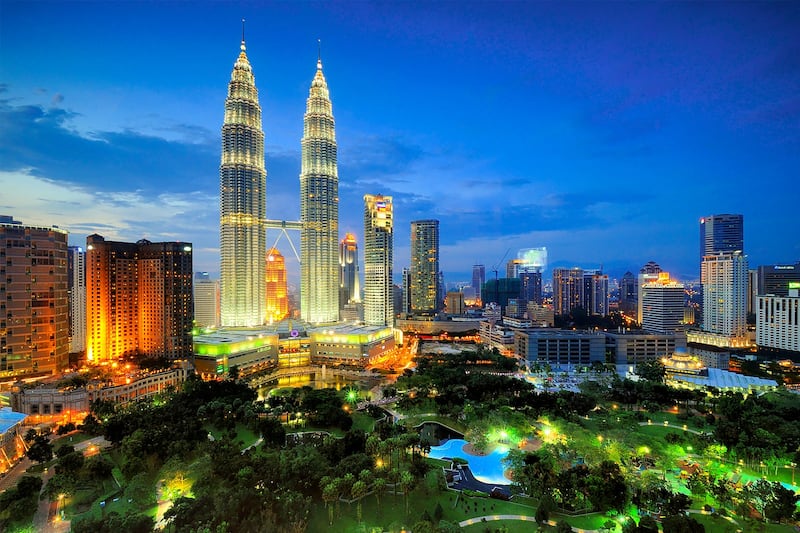
Welcome to Kuala Lumpur, the bustling capital city of Malaysia. With its unique blend of cultures, delicious food, stunning architecture, and vibrant nightlife, Kuala Lumpur is a must-visit destination for any traveler.
This travel guide will take you through the best things to do, see, and eat in Kuala Lumpur and provide practical information to help you make the most of your trip.
Table of Contents
- History and Background
- Getting There
- When to Go
- Where to Stay
- How Many Days
- Getting Around
- Things to Do & See
- What to Eat
- Day Trips
- Tips for Families
History and Background
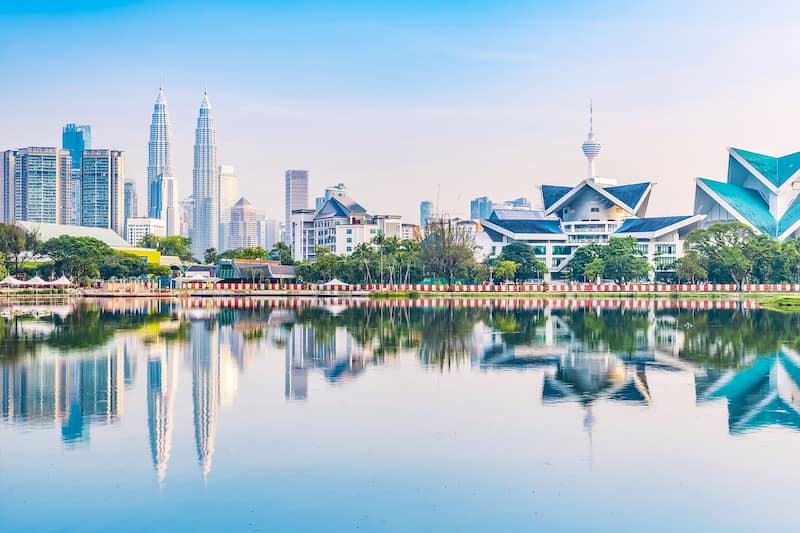 Kuala Lumpur, which means “muddy confluence” in Malay, got its name from its location at the confluence of two rivers, the Klang and Gombak rivers.
Kuala Lumpur, which means “muddy confluence” in Malay, got its name from its location at the confluence of two rivers, the Klang and Gombak rivers.
It was founded in 1857 by Chinese tin miners drawn to the area’s abundant natural resources. In 1880, the British established a presence in the city, and Kuala Lumpur became the capital of the Federated Malay States in 1896. Today, Kuala Lumpur is a cosmopolitan city with over 7 million people.
Getting There
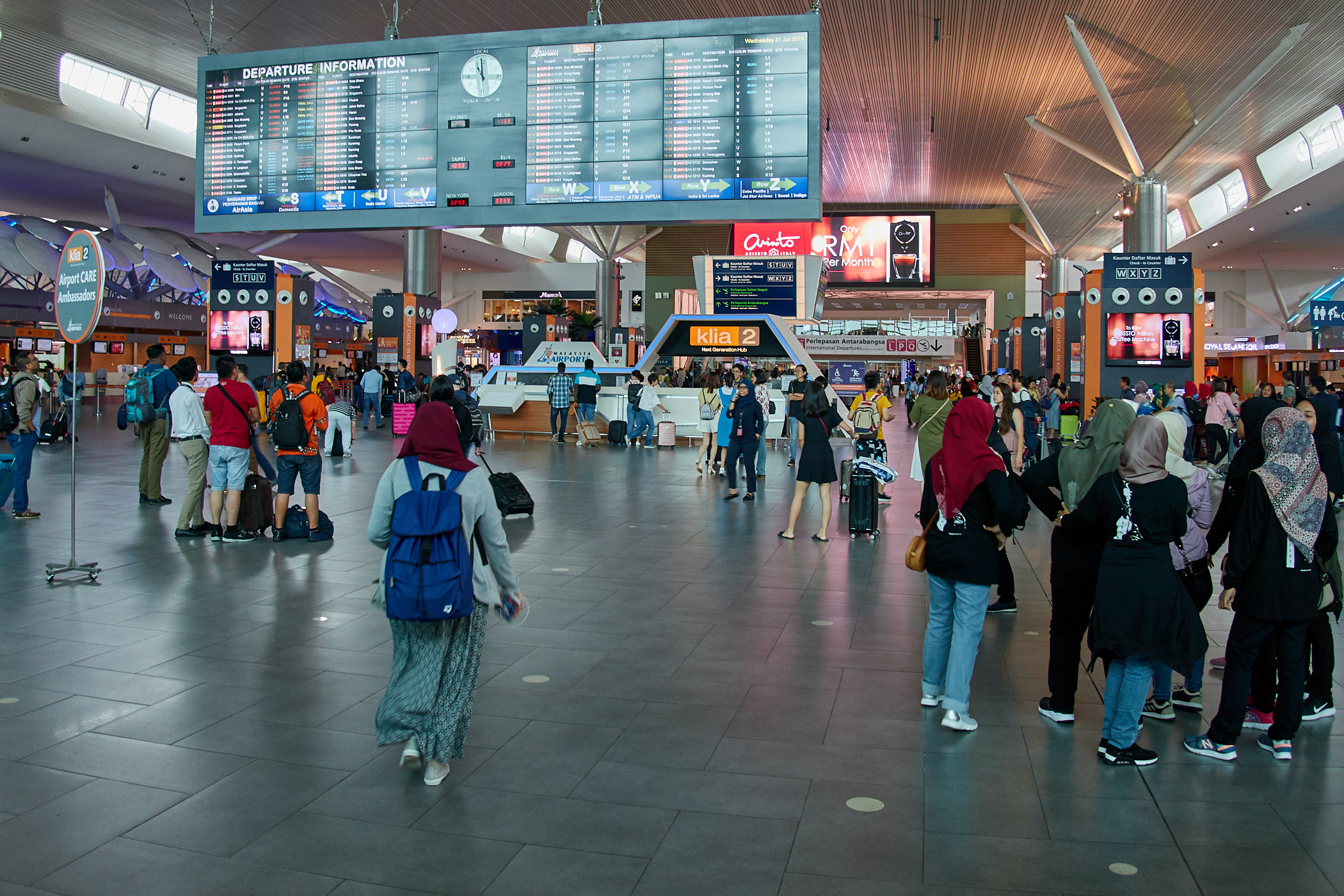
Kuala Lumpur is easily accessible by air, with the Kuala Lumpur International Airport (KLIA) located approximately 55 kilometers south of the city center.
The airport is served by many international airlines and numerous flights to other destinations within Malaysia. You can take a taxi, bus, or train from the airport to the city center.
If you’re traveling within Malaysia, you can also take the train to Kuala Lumpur from other major cities such as Penang and Johor Bahru. The city is also well-connected by bus and ferry to other parts of the country.
When to Go
Kuala Lumpur has a tropical climate with high humidity and temperatures that vary little throughout the year, typically ranging from 23°C to 33°C (73°F to 91°F).
The city experiences two main seasons: the dry and monsoon seasons. Here’s a breakdown of the best times to visit Kuala Lumpur based on these seasons:
Dry Season (March to September)
This is the best time to visit Kuala Lumpur, as the weather is generally dry and sunny. The skies are clear, making it a great time for outdoor activities and sightseeing.
However, this is also the peak tourist season, so expect crowds and higher prices for accommodations and attractions.
Monsoon Season (October to February)
This season brings heavy rain and thunderstorms to Kuala Lumpur, with the heaviest rainfall between November and January.
While the rain can be intense, it’s usually short-lived, and the city is still accessible and enjoyable during this time. Additionally, you can find lower prices on accommodations and attractions due to fewer tourists.
The best time to visit Kuala Lumpur depends on your preferences and what you plan to do. If you prefer dry weather and don’t mind crowds, visit between March and September.
If you’re on a budget and don’t mind some rain, visit between October and February. Regardless of when you go, be prepared for hot and humid weather, and be sure to pack appropriately.
Where to Stay
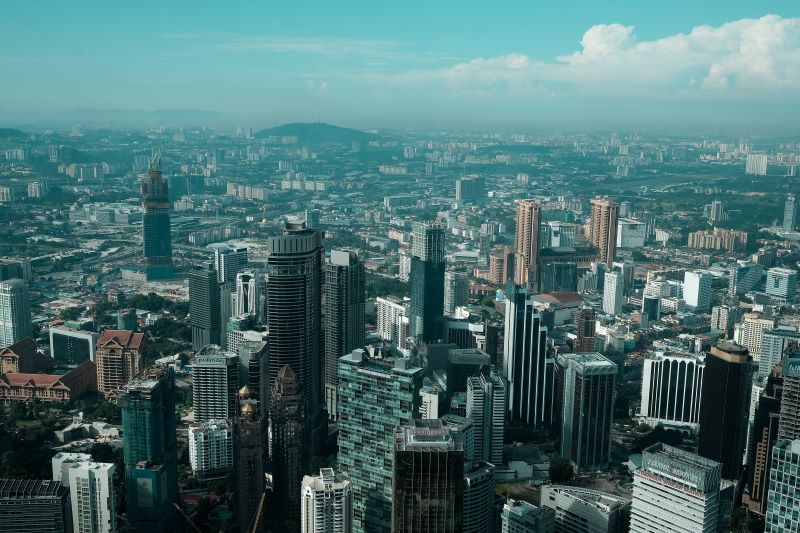
Kuala Lumpur offers travelers a wide range of accommodation options, from budget hostels to luxury hotels.
The best place to stay in Kuala Lumpur depends on your budget, preferences, and itinerary. Here are some popular areas to consider:
Bukit Bintang
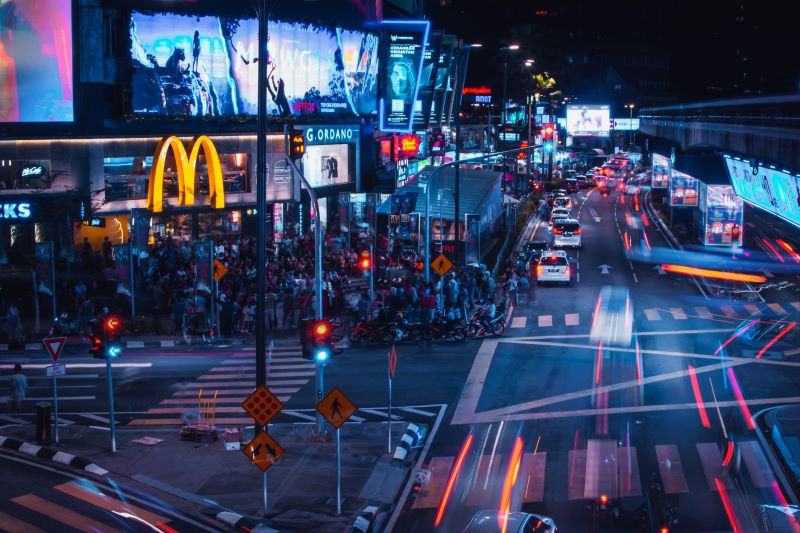
Bukit Bintang is a popular shopping and entertainment district in the heart of Kuala Lumpur, known for its lively atmosphere and proximity to the city’s major attractions.
The area has many accommodation options, ranging from budget hostels to luxury hotels.
KLCC
KLCC is home to the iconic Petronas Twin Towers and is a popular area for luxury hotels and upscale shopping malls.
The area is well-connected to the rest of the city and is a good choice for those looking for a more upscale stay.
Chinatown
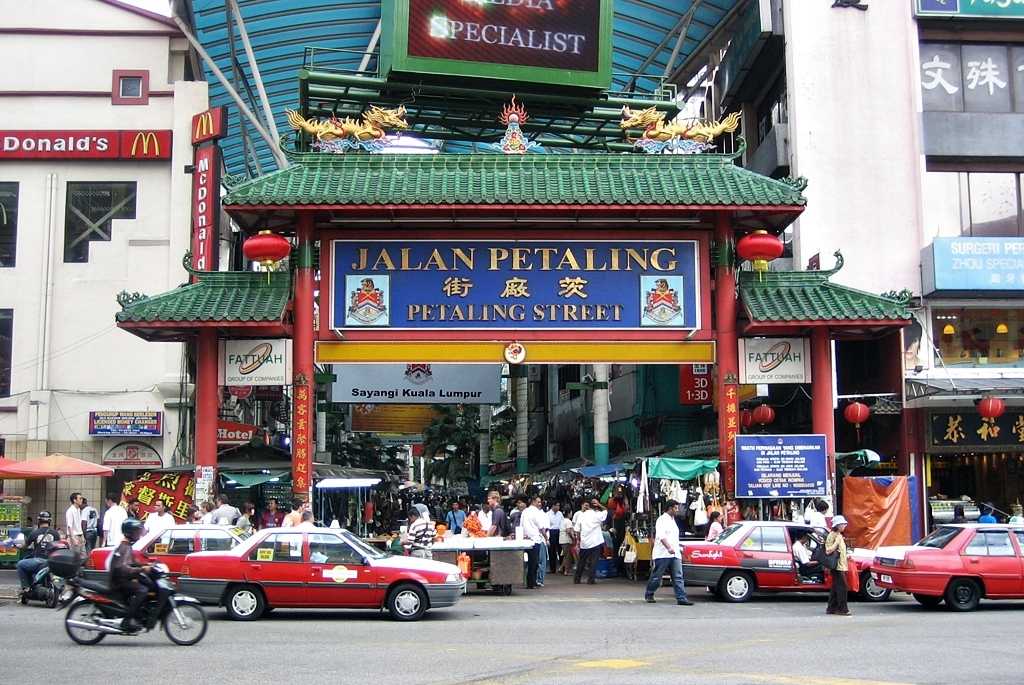 Chinatown is a vibrant and bustling area known for its street food, markets, and budget accommodation options.
Chinatown is a vibrant and bustling area known for its street food, markets, and budget accommodation options.
It’s a good choice for budget-conscious travelers who want to experience the local culture and nightlife.
How Many Days in Kuala Lumpur
The ideal length of stay in Kuala Lumpur largely depends on your itinerary and interests.
While some travelers may be content with a brief stopover, others may want to spend several days exploring the city and its attractions.
If you plan to visit some of the city’s major landmarks, such as the Petronas Twin Towers, Batu Caves, or Merdeka Square, you’ll need at least two to three days to explore these attractions.
However, if you’re interested in delving deeper into Kuala Lumpur’s culture and cuisine, you may want to plan for a longer stay.
The city is known for its diverse culinary scene, with a blend of Malay, Chinese, and Indian cuisines, and there are plenty of local markets and street food stalls to explore.
If you’re interested in shopping, Kuala Lumpur offers a wide range of shopping options, from upscale malls to traditional markets. You could easily explore the city’s shopping scene for a day or two.
The length of your stay in Kuala Lumpur depends on your interests and preferences. However, at least two to three days to explore the city’s major landmarks and attractions are recommended.
Getting Around
Kuala Lumpur has an efficient public transportation system, including buses, trains, and taxis. The city’s train system, known as the KTM, connects the city center with surrounding suburbs and nearby towns.
The LRT, or light rail transit, is a rapid transit system that serves the city center and its immediate suburbs.
Taxis are plentiful in Kuala Lumpur, but it’s important to negotiate the fare before getting into the taxi to avoid being overcharged.
Another popular option for getting around the city is ride-sharing services like Grab and Uber, which offer affordable and convenient transportation.
Things to See and Do
Petronas Twin Towers
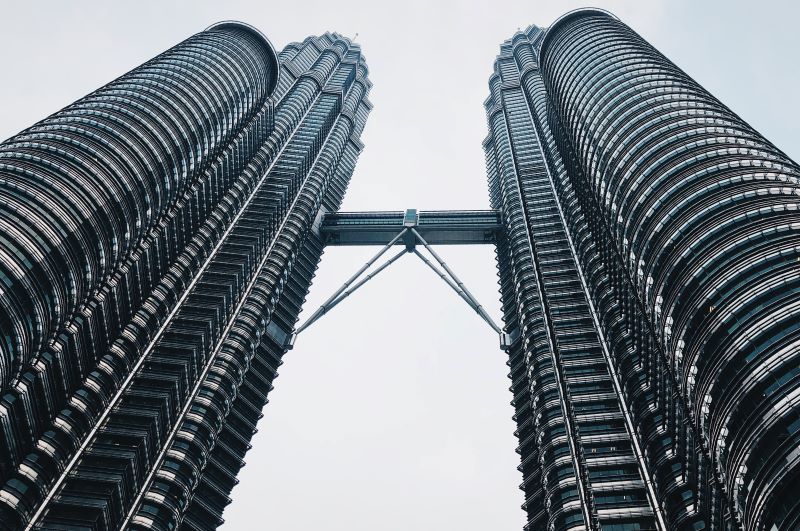 The Petronas Twin Towers are an iconic landmark and one of the most popular tourist attractions in Kuala Lumpur.
The Petronas Twin Towers are an iconic landmark and one of the most popular tourist attractions in Kuala Lumpur.
The towers are the tallest twin towers in the world, standing at 452 meters (1,483 feet). The towers were designed by the Argentine architect César Pelli and were completed in 1998.
The towers are located in the heart of Kuala Lumpur’s central business district and are home to several offices, a shopping mall, and an observation deck.
Visitors can take a high-speed elevator to the Skybridge, which connects the two towers on the 41st and 42nd floors.
From there, visitors can take another elevator to the Observation Deck on the 86th floor, which offers stunning views of the city skyline.
The towers are especially beautiful at night, lit up with a spectacular light show. The light show takes place every evening from 8 pm to 10 pm and features a variety of colors and patterns.
In addition to the Observation Deck, the towers are also home to the Petronas Art Gallery, which features a collection of contemporary Malaysian art, and the Petronas Philharmonic Hall, which hosts a variety of musical performances.
Visitors can purchase tickets for the Observation Deck and Skybridge online in advance or at the ticket counter located in the Concourse Level of the Petronas Twin Towers.
Booking tickets in advance is recommended, as they can sell out quickly, especially during peak tourist season.
Batu Caves

Batu Caves is one of the most popular tourist attractions in Kuala Lumpur. It is a limestone hill with a series of caves and cave temples inside it.
The site is named after the Batu River, which flows nearby. The main attraction of the Batu Caves is the Hindu temple inside the largest cave, known as the Cathedral Cave or Temple Cave.
To reach the temple, visitors must climb 272 steps up a steep staircase leading to the cave’s entrance.
The climb can be quite challenging, especially in the hot and humid weather, so wearing comfortable shoes and bringing plenty of water is important.
Visitors will pass by several smaller caves and shrines and a large statue of Lord Murugan, the Hindu god of war and victory.
Once inside the Cathedral Cave, visitors will be awed by the stunning interior, which features high ceilings, intricate carvings, and colorful statues of Hindu deities.
The cave is also home to a colony of monkeys, which can be seen climbing around the cliffs and trees outside.
Aside from the Cathedral Cave, several smaller Batu Caves are worth exploring. These caves are less crowded than the main cave and offer a more peaceful and serene atmosphere.
Hindu devotees use some of these caves for meditation and prayer.
Batu Caves is open daily from 6 am to 9 pm, and admission is free. However, visitors are encouraged to make a small donation to help maintain the site.
The best time to visit is early morning or late afternoon when the crowds are thinner, and the weather is cooler.
Merdeka Square
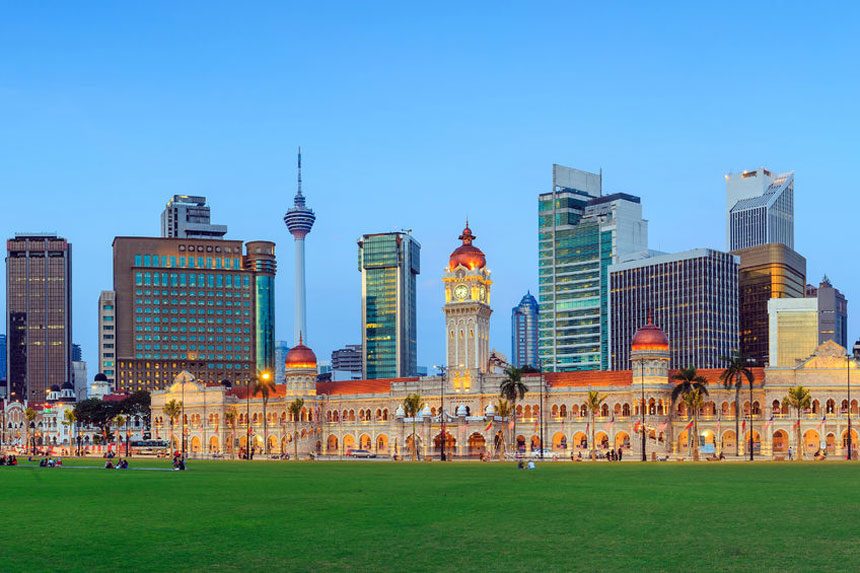
Merdeka Square, also known as Dataran Merdeka, is one of the most historic landmarks in Kuala Lumpur.
It is a large open field and is surrounded by several important buildings, including the Sultan Abdul Samad Building, the Royal Selangor Club, and the National Textile Museum.
Merdeka Square is significant because it was where Malaysia declared independence from British rule on August 31, 1957.
Today, the square is a popular gathering spot for locals and tourists and is often used for cultural events and celebrations.
The most prominent feature of the square is the 100-meter-tall flagpole, one of the tallest in the world.
The flagpole is located at the center of the square and flies the Malaysian flag, which is raised and lowered each day at sunrise and sunset.
Surrounding the square, visitors can find several historic buildings that date back to the colonial era.
The most notable of these is the Sultan Abdul Samad Building, which was built in 1897 and served as the administrative center of British Malaya.
The building is known for its distinctive architecture, which blends Moorish and Western styles.
The Royal Selangor Club is another notable building located near Merdeka Square.
It was originally built as a meeting place for British expatriates and today serves as a private social club for members.
Visitors can also explore the National Textile Museum, which features exhibits on the history and cultural significance of traditional Malaysian textiles.
Central Market
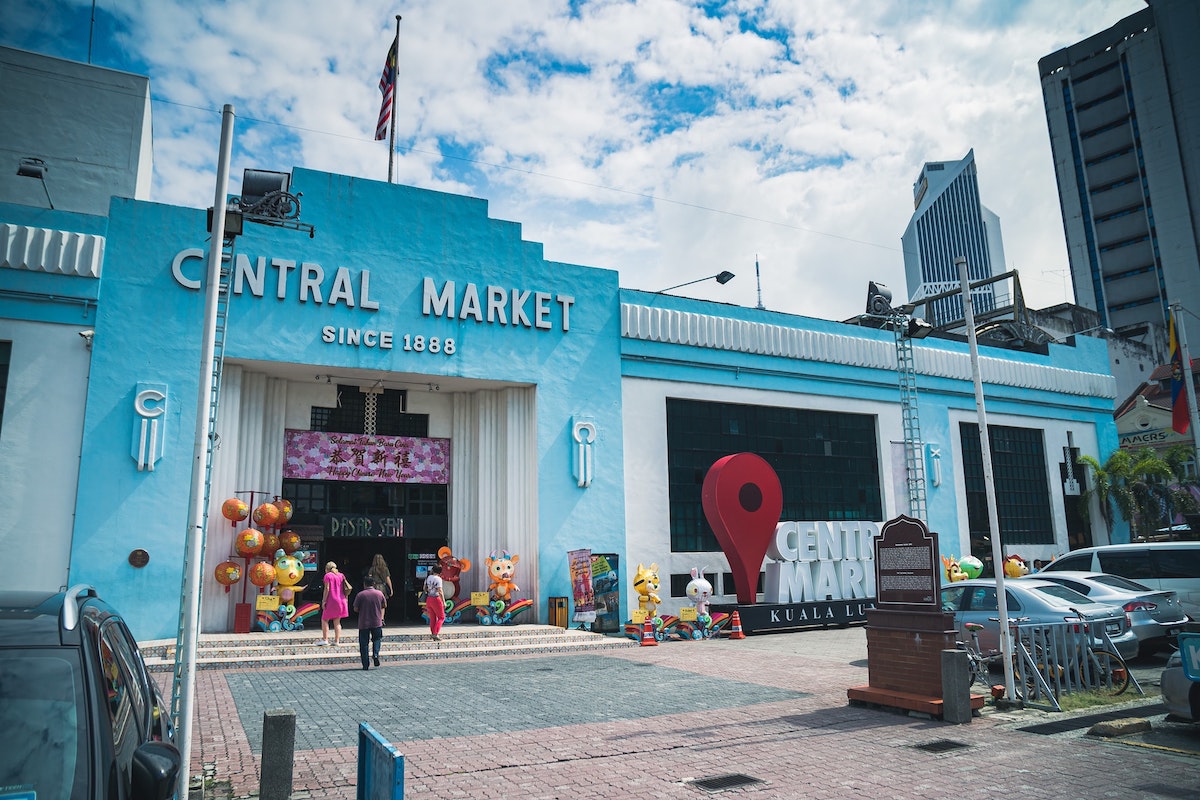
Central Market Kuala Lumpur, or Pasar Seni, is a popular shopping destination. The market was originally built in 1888 and served as a wet market for locals to buy fresh produce and meat.
Today, the market has been converted into a thriving center for arts, crafts, and cultural goods.
Visitors to Central Market can explore a wide variety of shops and stalls selling everything from handmade crafts and souvenirs to traditional Malaysian clothing and accessories.
The market is particularly known for its selection of batik fabrics and intricate wood carvings.
In addition to shopping, Central Market is also a hub for cultural performances and events.
Visitors can watch traditional dances and music performances and participate in workshops on topics such as batik painting and wood carving.
One of the highlights of Central Market is the food court, which features a variety of local delicacies and international cuisine.
Visitors can sample traditional Malaysian dishes such as nasi lemak and satay and international favorites such as Japanese sushi and Italian pizza.
Central Market is open daily from 10 am to 9.30 pm, making it a convenient destination for shopping and dining in Kuala Lumpur.
Its central location, diverse selection of goods, and cultural attractions make it a must-visit destination for anyone traveling to the city.
National Museum
The Kuala Lumpur National Museum is one of Malaysia’s most important cultural institutions. It is located in a beautiful colonial-era building, and features exhibits on Malaysia’s history, culture, and art.
The museum’s permanent collection includes a wide variety of artifacts and exhibits that highlight Malaysia’s rich cultural heritage.
Visitors can explore exhibits on traditional Malay architecture, textiles, and weaponry, as well as displays on the country’s colonial history and independence.
One of the most popular exhibits at the Kuala Lumpur National Museum is the Malay World Ethnology section, which features various cultural artifacts from across Malaysia and Southeast Asia.
Visitors can see examples of traditional clothing, musical instruments, household items, and displays on the traditional crafts of batik and woodcarving.
Other notable exhibits at the museum include the Prehistory and Protohistory Gallery, which features artifacts from Malaysia’s prehistoric past, and the Ceramics Gallery, which showcases examples of traditional Malaysian pottery and ceramics.
In addition to its permanent collection, the Kuala Lumpur National Museum also hosts temporary exhibits and events throughout the year.
Visitors can check the museum’s website for information on current and upcoming exhibits.
Kuala Lumpur Bird Park

The Kuala Lumpur Bird Park is one of the largest free-flight aviaries in the world.
The park is home to over 3,000 birds from more than 200 species, making it a must-visit destination for bird enthusiasts and nature lovers.
One of the highlights of the Kuala Lumpur Bird Park is the free-flight aviary, where visitors can walk through a large enclosure and observe birds flying and interacting with one another in a natural environment.
The aviary is home to a variety of birds, including peacocks, hornbills, and parrots.
Another popular attraction at the Kuala Lumpur Bird Park is the Flamingo Pond, home to a large flock of pink flamingos. Visitors can watch the birds as they wade in the pond and preen their feathers.
In addition to the free-flight aviary and Flamingo Pond, Kuala Lumpur Bird Park also features several other exhibits and attractions.
Visitors can explore the Hornbill Park, home to several species of hornbills, as well as the World of Parrots exhibit, which features a wide variety of colorful parrots.
Several interactive exhibits and educational programs are available for visitors who want to learn more about the birds at the park.
The park offers guided tours and opportunities to participate in bird feeding and photo sessions with some of the park’s most photogenic residents.
Islamic Arts Museum
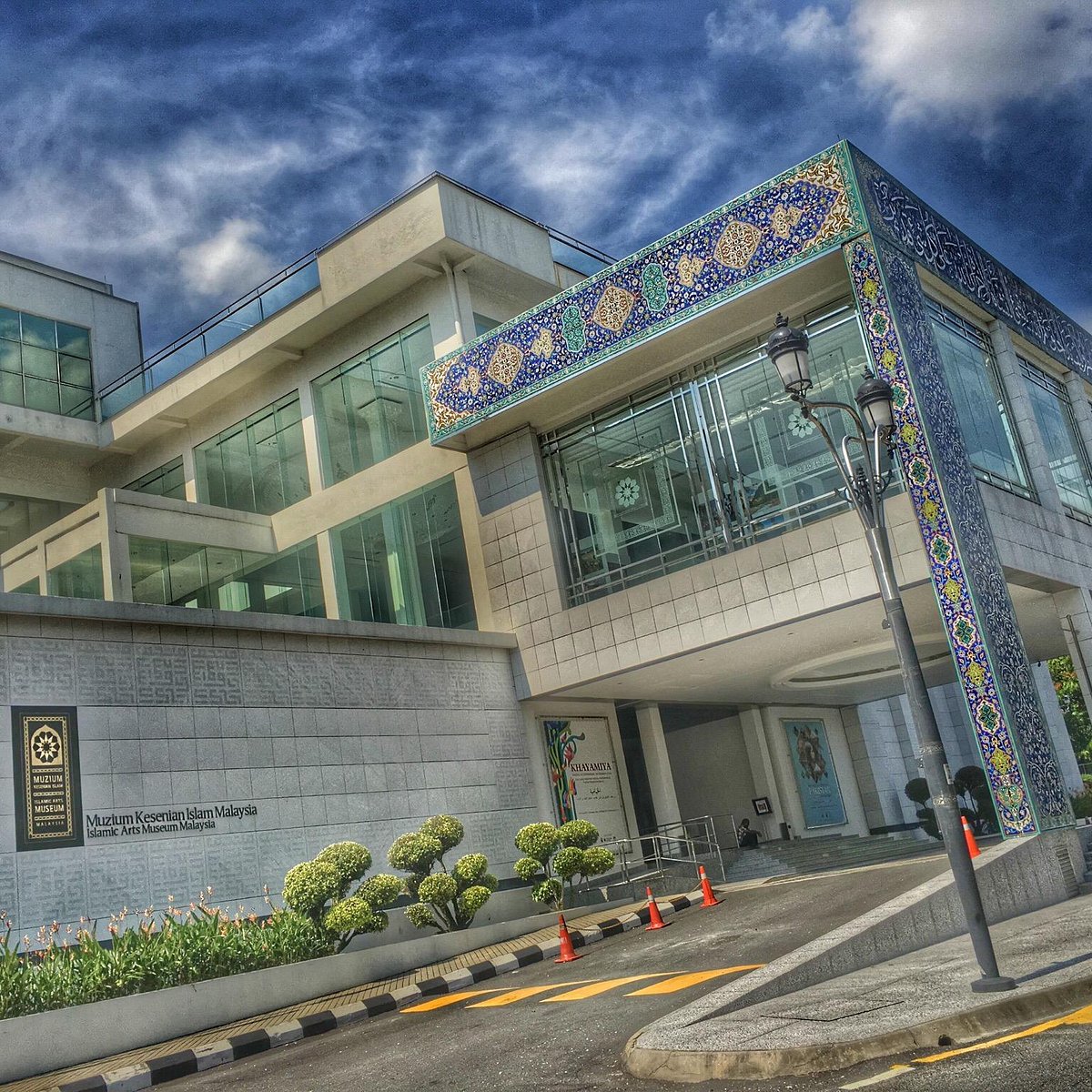 The Islamic Arts Museum Malaysia (IAMM) is one of the most important cultural institutions in Kuala Lumpur, dedicated to promoting the arts and culture of the Islamic world.
The Islamic Arts Museum Malaysia (IAMM) is one of the most important cultural institutions in Kuala Lumpur, dedicated to promoting the arts and culture of the Islamic world.
The museum is in a beautiful building with over 7,000 artifacts and exhibits.
The collection at the Islamic Arts Museum is arranged thematically, with exhibits covering a wide variety of topics related to Islamic art and culture.
Visitors can explore exhibits on calligraphy, ceramics, textiles, jewelry, and metalwork and displays on the Islamic world’s scientific and cultural achievements.
One of the museum’s highlights is the Islamic Architecture Gallery, which features examples of Islamic architectural styles from across the world.
Visitors can see models of famous mosques and palaces and examples of traditional Islamic decorative arts such as tilework and woodcarving.
Other notable exhibits at the Islamic Arts Museum include the Quran and Manuscripts Gallery, which features rare and beautiful examples of Islamic calligraphy, and the Textiles Gallery, which showcases a wide variety of textiles and fabrics from across the Islamic world.
In addition to its permanent collection, the Islamic Arts Museum hosts temporary exhibits and events throughout the year.
Visitors can check the museum’s website for information on current and upcoming exhibits.
KLCC Park
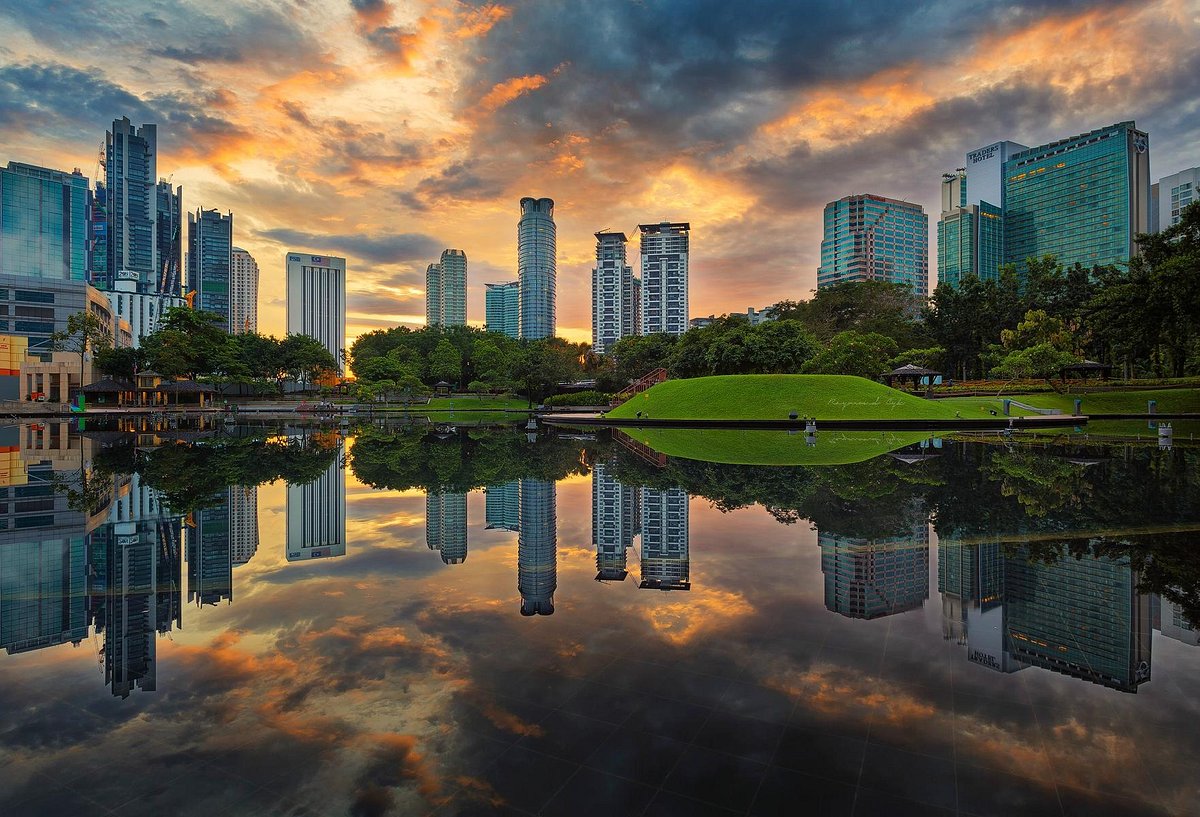
KLCC Park is a beautifully landscaped public park. The park covers an area of 50 acres.
It is situated at the foot of the iconic Petronas Twin Towers, making it one of the most popular tourist destinations in the city.
The park features lush greenery, trees, and gardens, as well as a large man-made lake and several water features.
Visitors can enjoy a leisurely stroll along the park’s many walking paths, admire the beautiful scenery, or relax on the park’s many benches and picnic areas.
One of the park’s main attractions is the Lake Symphony, a stunning water and light show that takes place twice nightly.
The show features colorful water fountains set to music, creating a mesmerizing and beautiful display that is not to be missed.
The park is also home to several art installations and sculptures, including the iconic I ♥ KL structure, which has become a popular spot for photos and selfies.
For visitors with children, the park features a large playground area, a wading pool, and a splash pad.
There is also a jogging track and outdoor exercise equipment for those looking to stay active during their visit.
Sultan Abdul Samad Building
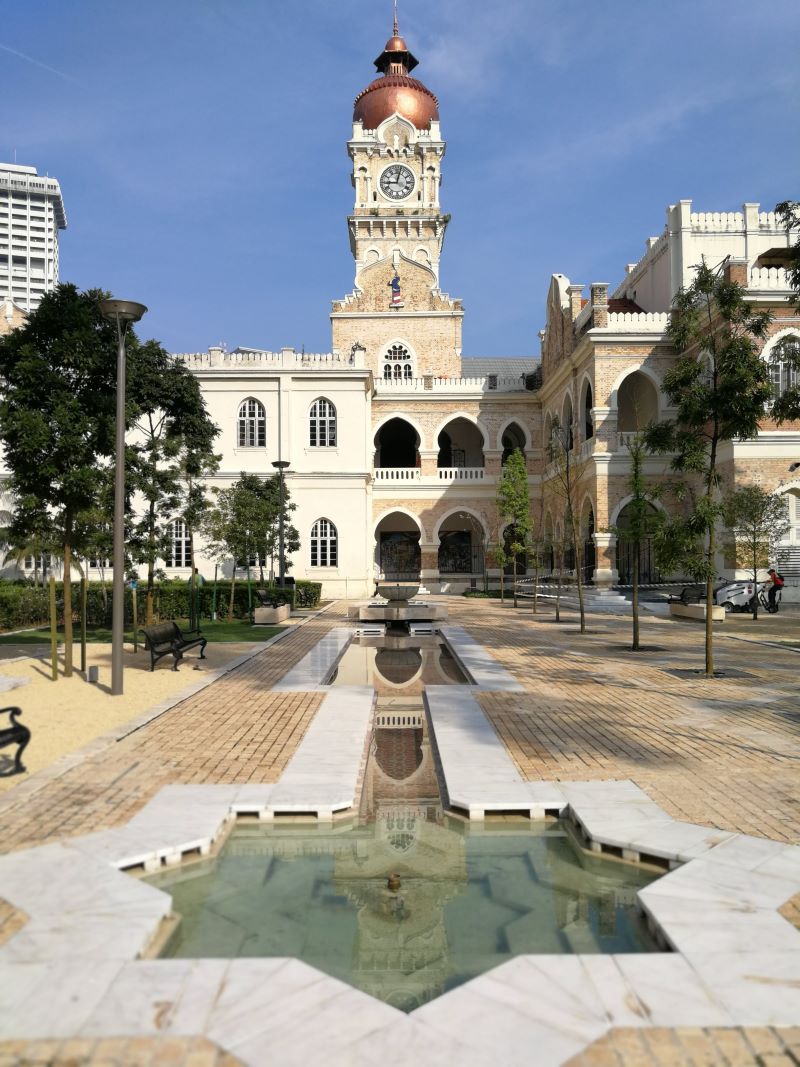
The Sultan Abdul Samad Building is one of the most iconic landmarks in Kuala Lumpur.
Built-in 1897 during British colonial rule, the building served as the administrative center of the colonial government in Malaysia.
The building’s architecture combines different styles, including Moorish and Victorian influences.
Its most notable feature is the clock tower, which stands over 40 meters tall and has become a symbol of Kuala Lumpur.
Today, the Sultan Abdul Samad Building is still used for government offices, but visitors can admire its beautiful architecture and historical significance from the outside.
The building is particularly stunning when lit at night, providing a beautiful photo backdrop.
In addition to its architectural significance, the Sultan Abdul Samad Building has also played an important role in Malaysian history.
It was the site of several key historical events, including the declaration of Malaysia’s independence in 1957 and the lowering of the Union Jack flag in 1957, symbolizing the end of British colonial rule.
Visitors to the Sultan Abdul Samad Building can also explore the surrounding area, home to several other historic buildings and landmarks, including the Kuala Lumpur City Gallery and the Dataran Merdeka (Independence Square).
Menara Kuala Lumpur
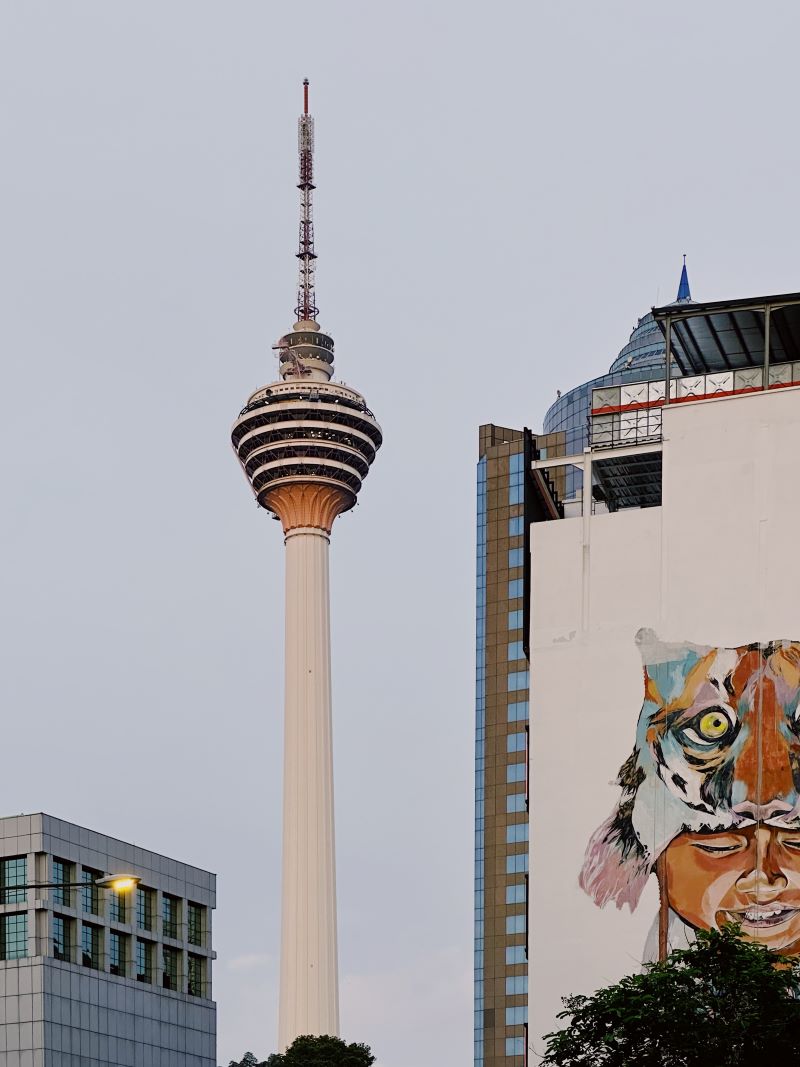
Menara Kuala Lumpur, also known as KL Tower, is one of the tallest telecommunications towers in the world, standing at the height of 421 meters. The tower is a popular tourist destination, offering panoramic city views.
The tower has an observation deck located at the height of 276 meters, which offers 360-degree views of the city.
Visitors can take a high-speed elevator to the top, which takes only 54 seconds, and enjoy the breathtaking views from the observation deck.
In addition to the observation deck, Menara Kuala Lumpur has several other attractions, including a revolving restaurant, a mini zoo, and a cultural village showcasing Malaysia’s rich cultural heritage.
Visitors can also enjoy a skywalk around the edge of the tower, which offers a unique and exhilarating experience.
For adventure seekers, Menara Kuala Lumpur also has a base jumping platform, allowing visitors to experience the thrill of jumping off the tower and freeing before landing safely on the ground.
The tower is particularly stunning at night when it is lit up with colorful lights, providing a beautiful backdrop for photos.
What to Eat in Kuala Lumpur
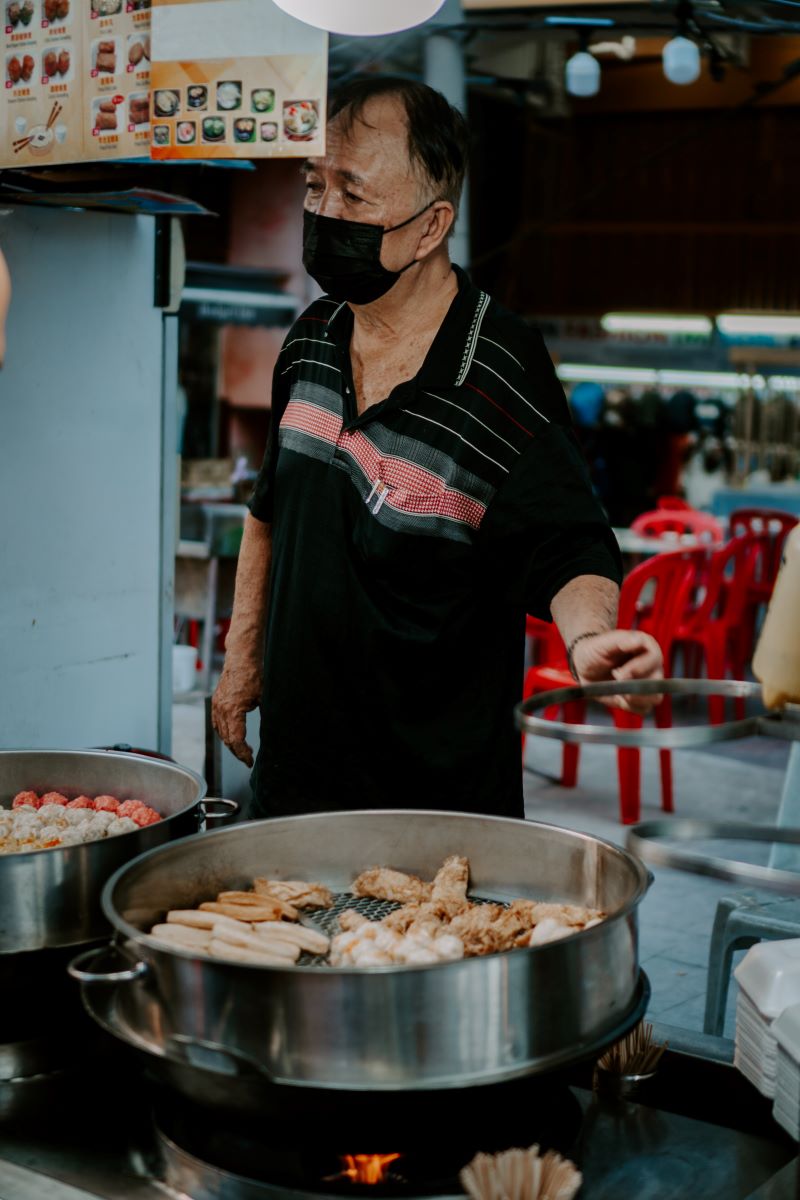
Kuala Lumpur is a food lover’s paradise, with a rich and diverse culinary scene that blends Malay, Chinese, and Indian flavors. Here are some must-try dishes and street food in Kuala Lumpur:
- Nasi Lemak – Malaysia’s national dish, nasi lemak is a fragrant rice dish cooked in coconut milk and served with anchovies, peanuts, cucumber, and a spicy sambal sauce.
- Satay – Skewered and grilled meat served with a peanut sauce, satay is a popular street food in Kuala Lumpur.
- Roti Canai – A type of flatbread that’s crispy on the outside and soft on the inside, roti canai is often served with a spicy curry sauce for dipping.
- Char Kuey Teow – A stir-fried noodle dish made with flat rice noodles, prawns, eggs, and bean sprouts.
- Hainanese Chicken Rice – A simple but flavorful dish of poached chicken served with fragrant rice cooked in chicken broth.
- Bak Kut Teh – A pork rib soup that’s simmered with a mix of herbs and spices, bak kut teh is often served with rice and other side dishes.
- Cendol – A refreshing dessert made with shaved ice, coconut milk, palm sugar, and green jelly noodles.
- Teh Tarik – A popular Malaysian milk tea that’s pulled back and forth between two cups to create a frothy texture.
These are just a few of the many delicious dishes to try in Kuala Lumpur.
Be sure to explore the local street food scene and the city’s many restaurants and cafes to discover more of the city’s culinary delights.
Day Trips From Kuala Lumpur
Kuala Lumpur is a great base for exploring some surrounding areas and attractions. Here are some popular day trips from Kuala Lumpur
Genting Highlands
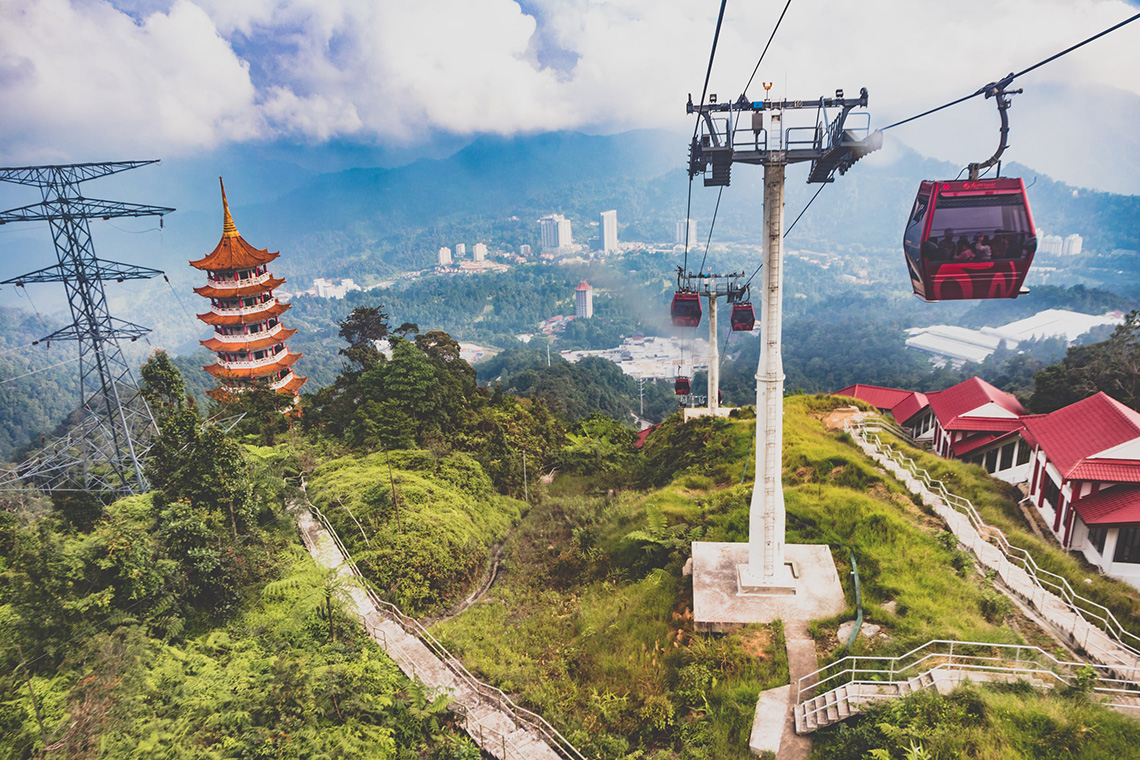
Genting Highlands is a hill resort located in the state of Pahang, Malaysia. It is approximately 1,800 meters above sea level and is known for its cooler climate, which provides a welcome respite from the heat of the lowlands.
The resort features various attractions such as casinos, theme parks, shopping malls, and hotels. The most popular attraction is the Genting Highlands Theme Park, which has a variety of rides and activities suitable for all ages. Other popular attractions include the Skytropolis Indoor Theme Park, SnowWorld, and the Skyway Cable Car.
Aside from the attractions, Genting Highlands is also home to several hotels and resorts, including the First World Hotel, which was once the largest hotel in the world.
Malacca
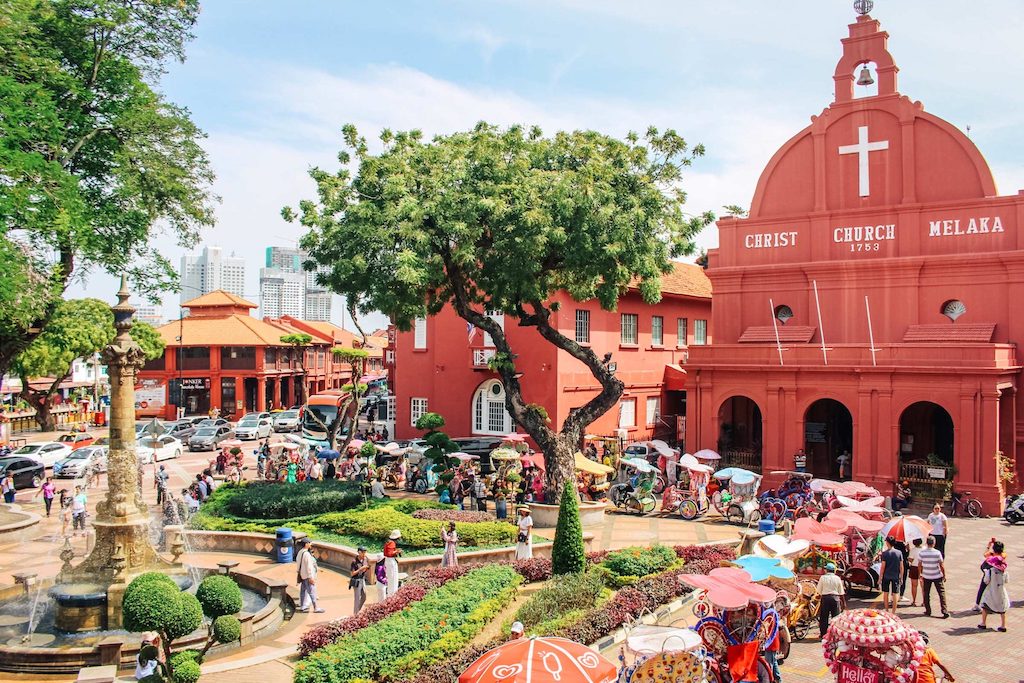
Malacca, also known as Melaka, is a historic city in the southern region of Malaysia, approximately 150 kilometers south of Kuala Lumpur. It is a popular tourist destination due to its rich cultural heritage, colonial history, and architectural landmarks.
The city was founded by a Malay prince in the 15th century and was subsequently ruled by the Portuguese, Dutch, and British, each leaving their own mark on the city’s architecture and culture. In recognition of its historical significance, Malacca was designated a UNESCO World Heritage Site in 2008.
Some of the city’s top attractions include the A Famosa Fortress, St. Paul’s Church, the Jonker Street Night Market, and the Baba Nyonya Heritage Museum. Visitors can also take a river cruise to explore the city’s waterways and see the various historical sites from a different perspective.
In addition to its historical and cultural attractions, Malacca is also known for its food. The city has a rich culinary heritage influenced by Chinese, Malay, and Indian cultures, and is particularly famous for its Nyonya cuisine, which combines Chinese and Malay flavors.
Cameron Highlands
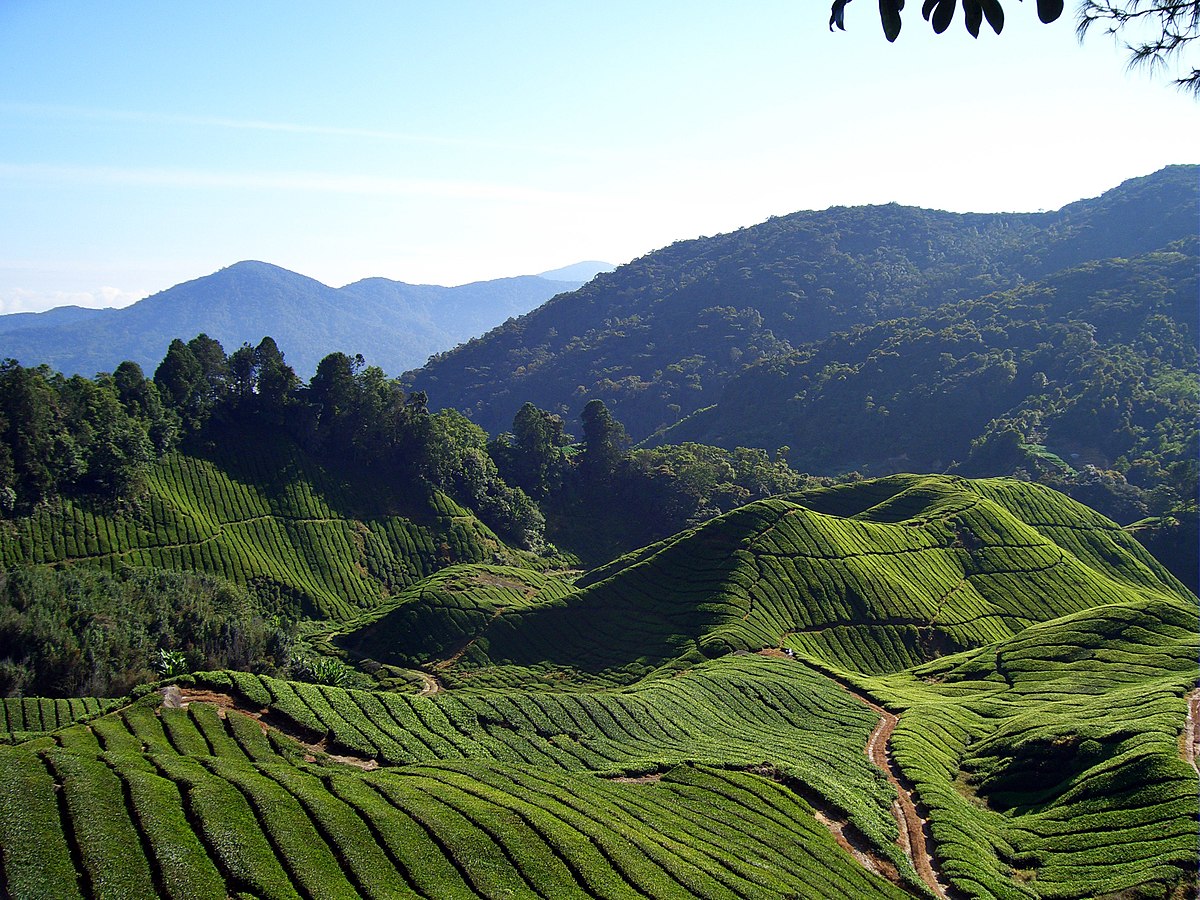
Cameron Highlands is a popular hill station located in the state of Pahang, Malaysia. It is approximately 1,500 meters above sea level and known for its cooler climate, lush tea plantations, and scenic views.
The highlands offer a variety of outdoor activities, such as hiking, jungle trekking, and exploring tea plantations. One of the most popular activities is visiting the BOH Tea Plantation, the largest tea producer in Malaysia and offering guided tours of its plantations and processing facilities.
Other popular attractions include the Cameron Highlands Butterfly Farm, the Cactus Valley, and the Time Tunnel Museum, which showcases the history and development of the Cameron Highlands.
The highlands are also known for their fresh produce, including strawberries, vegetables, and flowers, which can be found at the many markets and farms in the area.
Kuala Selangor
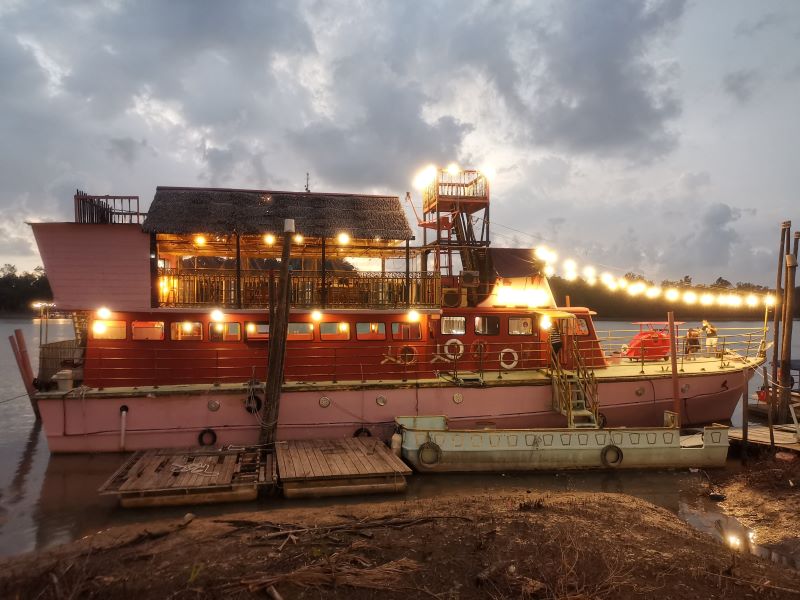
Kuala Selangor is a coastal town located in the state of Selangor, Malaysia. It is approximately 70 kilometers northwest of Kuala Lumpur and is known for its natural attractions, historical landmarks, and traditional seafood cuisine.
One of the top attractions in Kuala Selangor is the Kuala Selangor Nature Park, a mangrove forest reserve home to various bird species, including migratory birds. Visitors can take a river cruise to explore the mangrove forest and observe the wildlife.
Another popular attraction is the Kota Melawati, an ancient fort on a hilltop overlooking the town. Visitors can climb to the top of the fort to enjoy panoramic views of the surrounding area.
Kuala Selangor is also known for its fresh seafood, particularly its famous seafood restaurants located along the coast. Visitors can enjoy a variety of seafood dishes, including fresh crabs, prawns, and fish, all prepared in traditional Malay style.
In addition to its natural and culinary attractions, Kuala Selangor is home to several historical landmarks, including the Altingsburg Lighthouse, the oldest lighthouse in Malaysia, and the Bukit Melawati Hilltop Fortress.
Sunway Lagoon
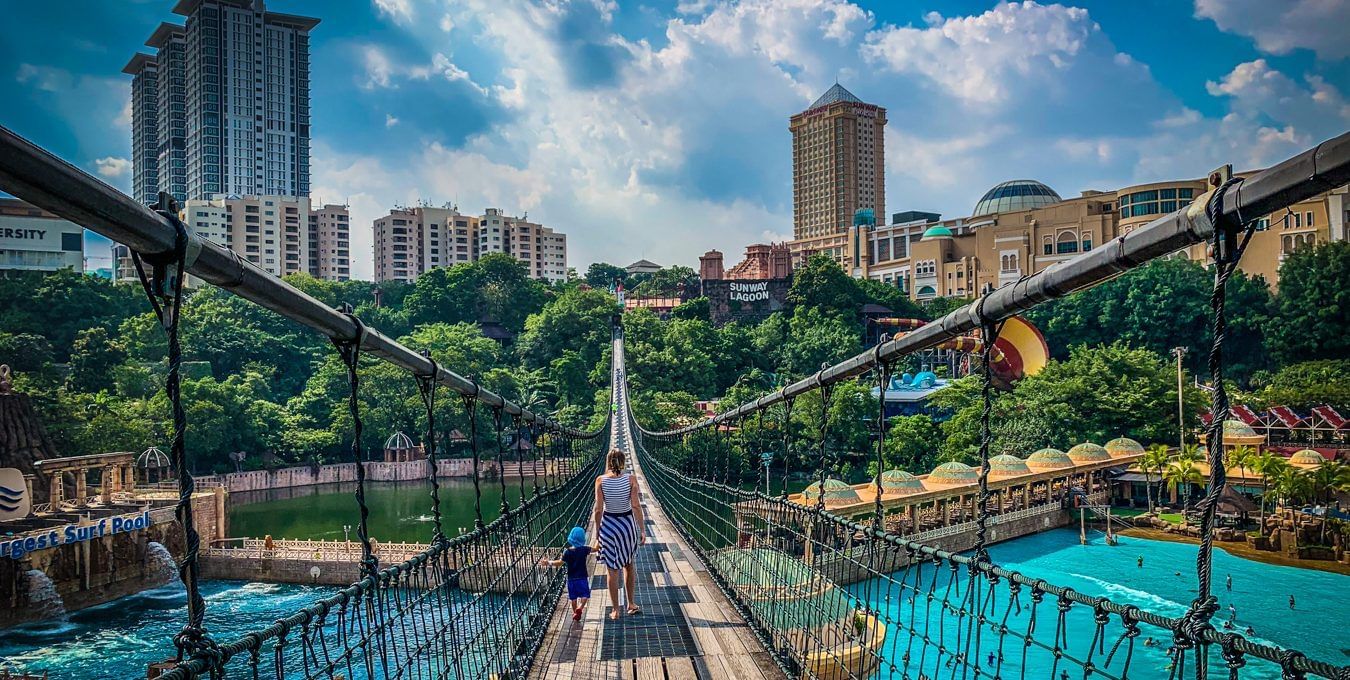 A popular water park and theme park located about 30 minutes from Kuala Lumpur, Sunway Lagoon is a great day trip destination for families.
A popular water park and theme park located about 30 minutes from Kuala Lumpur, Sunway Lagoon is a great day trip destination for families.
Tips For Families Visiting Kuala Lumpur
Kuala Lumpur is a great destination for families with children. Here are some tips to make your visit more enjoyable:
Plan your itinerary ahead of time
Kuala Lumpur has many attractions, and it’s important to plan your itinerary ahead of time to make the most of your visit.
Make sure to include family-friendly attractions such as the Petronas Twin Towers, Sunway Lagoon, and Aquaria KLCC.
Consider Staying in a Family-Friendly Hotel
Many hotels in Kuala Lumpur cater to families, with amenities such as swimming pools and play areas. Look for hotels with good reviews and family-friendly facilities.
Use Public Transportation
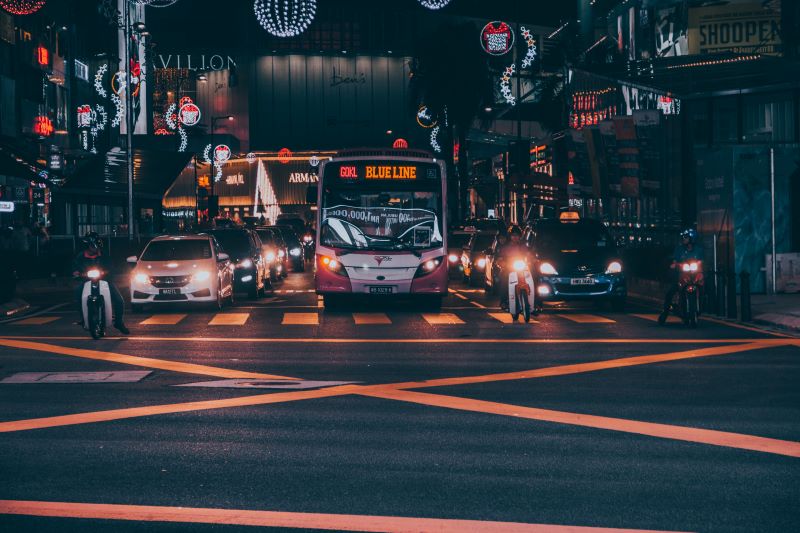
Kuala Lumpur has an efficient public transportation system that is easy to use and affordable. This can be especially useful for families with young children who may tire easily from walking.
Stay Hydrated and Bring Snacks
Kuala Lumpur can be hot and humid, so bring plenty of water and snacks for the family. There are also many convenience stores and supermarkets where you can purchase drinks and snacks.
Be Prepared for the Weather
Kuala Lumpur can experience sudden rain showers, so bringing a rain jacket or umbrella is a good idea. Sunscreen and hats are also essential during sunny days.
Take Breaks
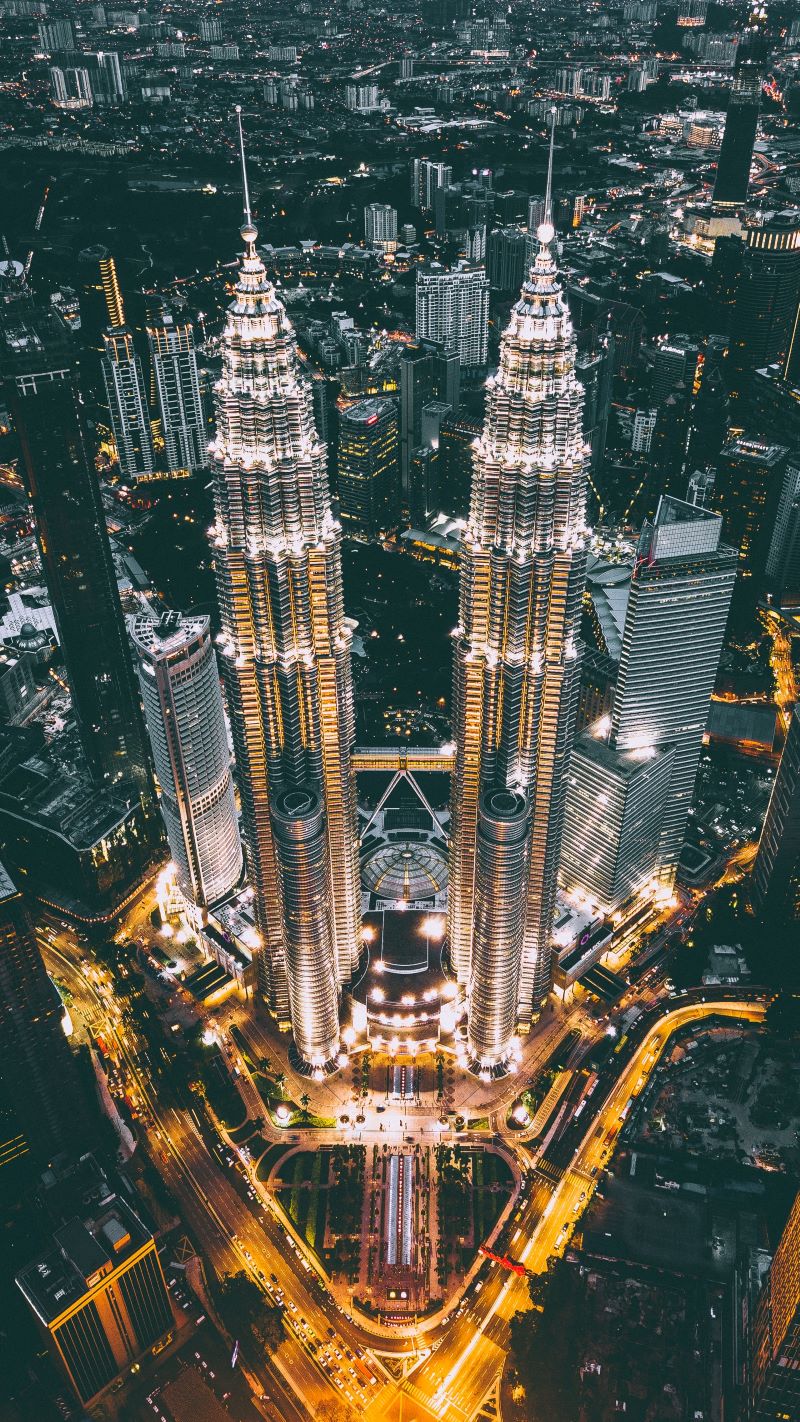
Kuala Lumpur can be overwhelming, especially for young children. Make sure to take breaks throughout the day and find places to sit and rest.
In conclusion, Kuala Lumpur is a fascinating city with a unique blend of modernity and tradition. From iconic landmarks like the Petronas Twin Towers and Batu Caves to bustling street markets and delicious local cuisine, there’s something for every traveler to enjoy.
When planning your trip to Kuala Lumpur, be sure to research the best time to visit based on weather and events, and consider staying in a central location to easily explore the city. It’s also a good idea to familiarize yourself with local customs and etiquette, such as removing your shoes before entering a home or temple.
While in Kuala Lumpur, don’t miss the opportunity to try local delicacies like nasi lemak, char kway teow, and satay. You can also shop for souvenirs at popular markets like Petaling Street and Central Market.
Be sure to check out our vlog The Go To Family. Connect with us on Instagram, Twitter, and Pinterest !


